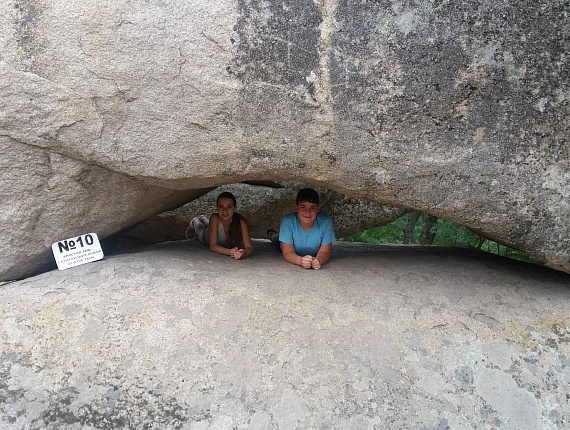- info@hotel-belitsa.com
- +359-884-425-099
Historical landmarks
Primorsko, located on the coast of the Black Sea, is a region with a long and interesting history spanning thousands of years. Archaeological findings in the area testify to habitation from ancient times, including the remains of sunken settlements at the mouth of the Ropotamo River, dating back to 3000 BC. Among the many tribes that left traces of their existence, the Thracians left the most significant heritage with numerous dolmens, sanctuaries, and necropolises, which were part of the fortress Ranuli. It is one of the largest fortified towns in Bulgaria, due to its area of 30 decares.
During the 1st to 4th centuries, Primorsko was a Roman settlement, and until the 14th century, the fortress existed under the name Ropotamo. Its strategically advantageous location and excellent organization made it a regional center during the Middle Ages. In 1879, four settlers arrived at the peninsula, then known as Kypryuburun, and established the settlement of Kypria, which was renamed Primorsko in 1934.
The Historical Museum of the town preserves and showcases exhibits found during archaeological excavations in the Primorsko municipality. The museum features spacious halls and a modern vault with a high level of security, where a Thracian gold treasure is kept. The exhibits displayed in the museum cover a wide historical range. In the largest hall, findings from several eras are exhibited. The ethnographic collection is located on the lowest floor, showcasing the daily life of the people from the region who lived at the end of the 19th century. Traditional costumes, tools, household items, tableware, and other interesting artifacts from the daily life of the local population are presented.
An innovative approach features a striking 3D hologram depicting a Thracian priest inviting guests to visit "Beglik Tash."
**The Sanctuary of Beglik Tash**
One of the most impressive attractions in Primorsko is the Sanctuary of Beglik Tash. Nearby are the remains of the ancient city of Ranuli, and Beglik Tash served as its sanctuary. People from ancient times came to this site for rituals. The priests constructed a temple atop the rock surface.
Most of the stone masses, arranged in compositions, are of natural origin, while a small part has been processed, and ritual signs can be seen in some places. Studies suggest that the religious rituals were performed in honor of the Sun God and the Mother Goddess. Their "Matrimonial Bed" is represented by a large stone in the shape of a bed, surrounded by carved depressions for liquids, possibly intended for rituals. It is possible that a wedding ceremony between the two deities was conducted here. A rock shaped like an inverted heart concealed ceremonies from the sight of the uninitiated. A composition made up of two vertical stones and a horizontal one resting on them symbolizes the womb of the Goddess, from which the priest was ritually born. There is also a narrow labyrinth between two tall stones. According to legends, anyone who successfully passes through is among the chosen and is also connected to the legend of Orpheus and his descent into the underworld. A carved altar in the rocks consists of two basins connected by channels. A large stone anchored in three places represents the main altar, next to which is the throne of the chief priest. There are indications that the rock sanctuary functioned as a calendar-clock and observatory. The rocks have carved holes that are illuminated during the solstices and equinoxes. The stones are arranged so that the shadow of the main altar, which falls on those to the north of it, forms a sundial that divides the day into six parts. Clay vessels, tools, weapons, and valuable coins have been found here.
**Remains of the Church of St. Paraskeva**
The Church of St. Paraskeva was a single-nave structure shaped like a cross with a cross-domed roof. There are traces of other buildings and a holy water source around the church, indicating that it was part of a medieval monastery. Today, only the foundations of the church remain.
According to tradition, the church was created by Tsar Simeon the Great, who, while hunting in the area, fell in love. Thus, he decided to build a church here to protect fishermen and sailors. Some scholars connect it with the sanctuary of Beglik Tash, as St. Paraskeva is the patroness of childbirth.
**Attractions Nearby Primorsko**
In Tsarevo, one can visit the Historical Museum and see a unique open-air museum – the "Goryanin Ship." Under a dome, documents and artifacts about the development of shipbuilding in the area are exhibited. The wooden ship in question was the first built in the shipyard of Tsarevo. It is likely the largest wooden ship created in Bulgaria. It represented a single-screw three-masted schooner. Built in 1947, it was used for cargo transport and later served as a training ship in the naval base of Varna. Eventually, it was converted into an attractive restaurant and sank in 1993 for 12 years. The remains can be seen in the museum, along with an accurate model of the schooner.
These are the most impressive historical attractions around Primorsko. Not far from here, in both directions, there are many more historical sites to visit. It is an incredible opportunity to combine a vacation with interesting excursions to exciting historical sites.


